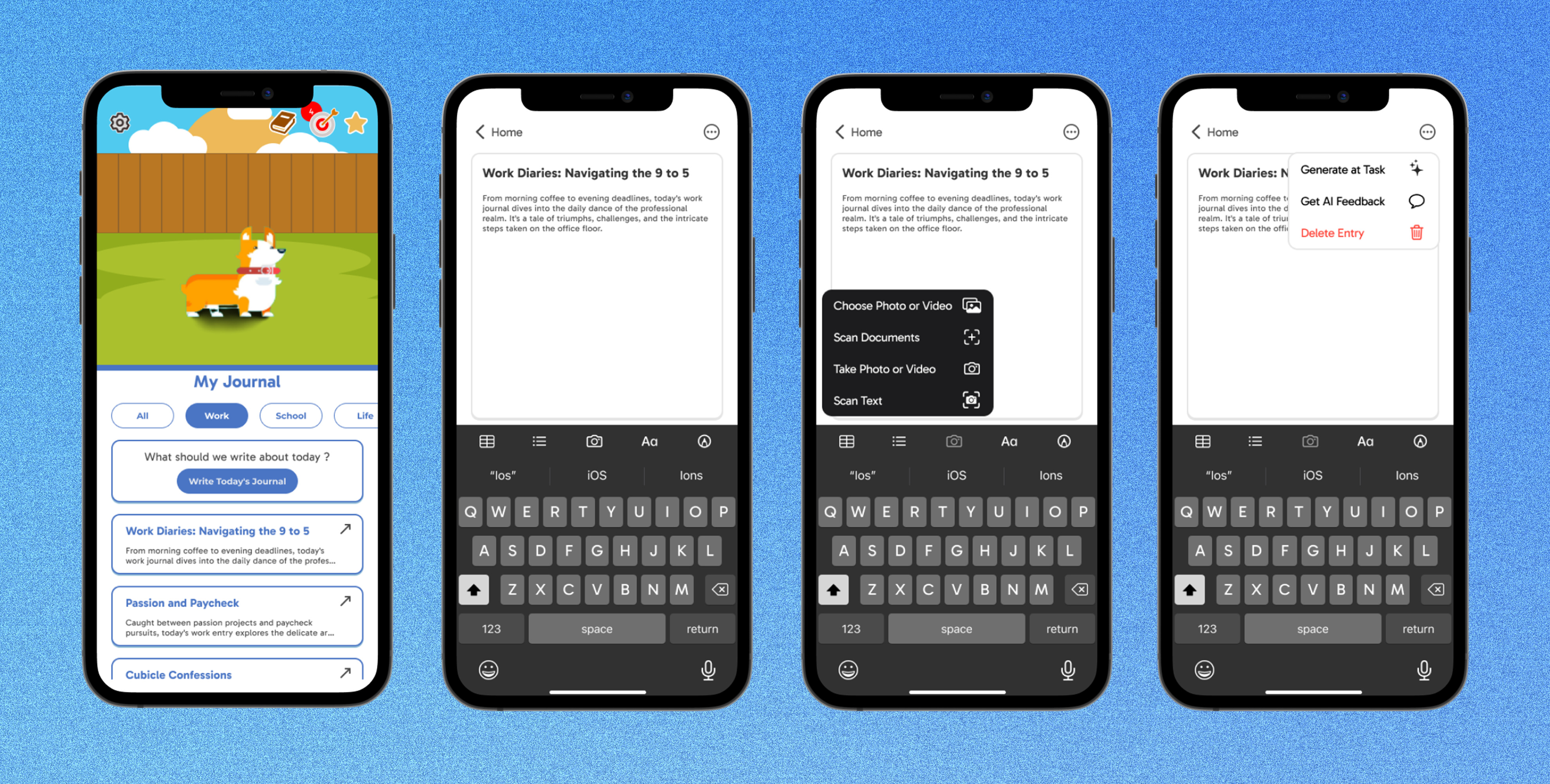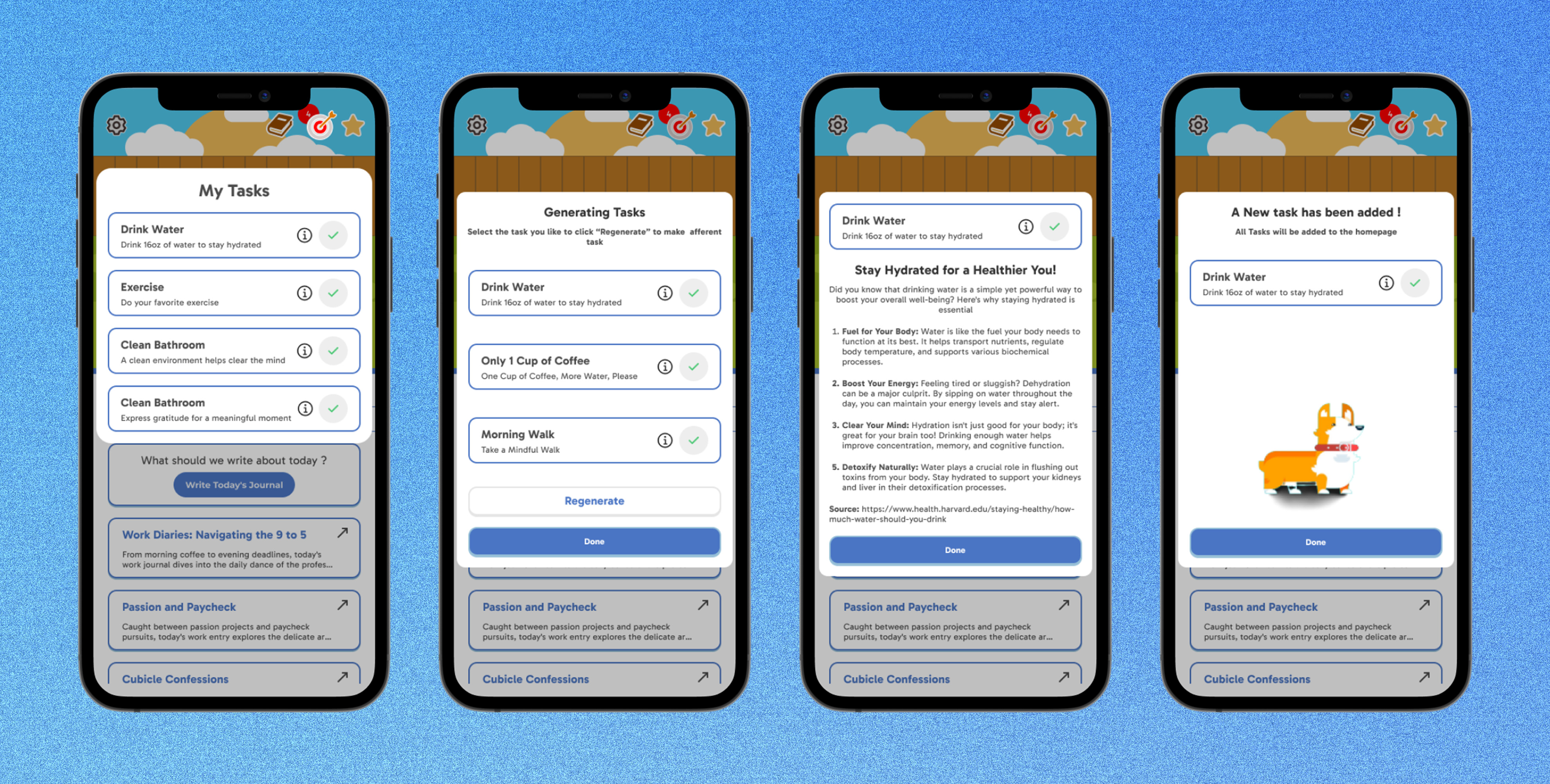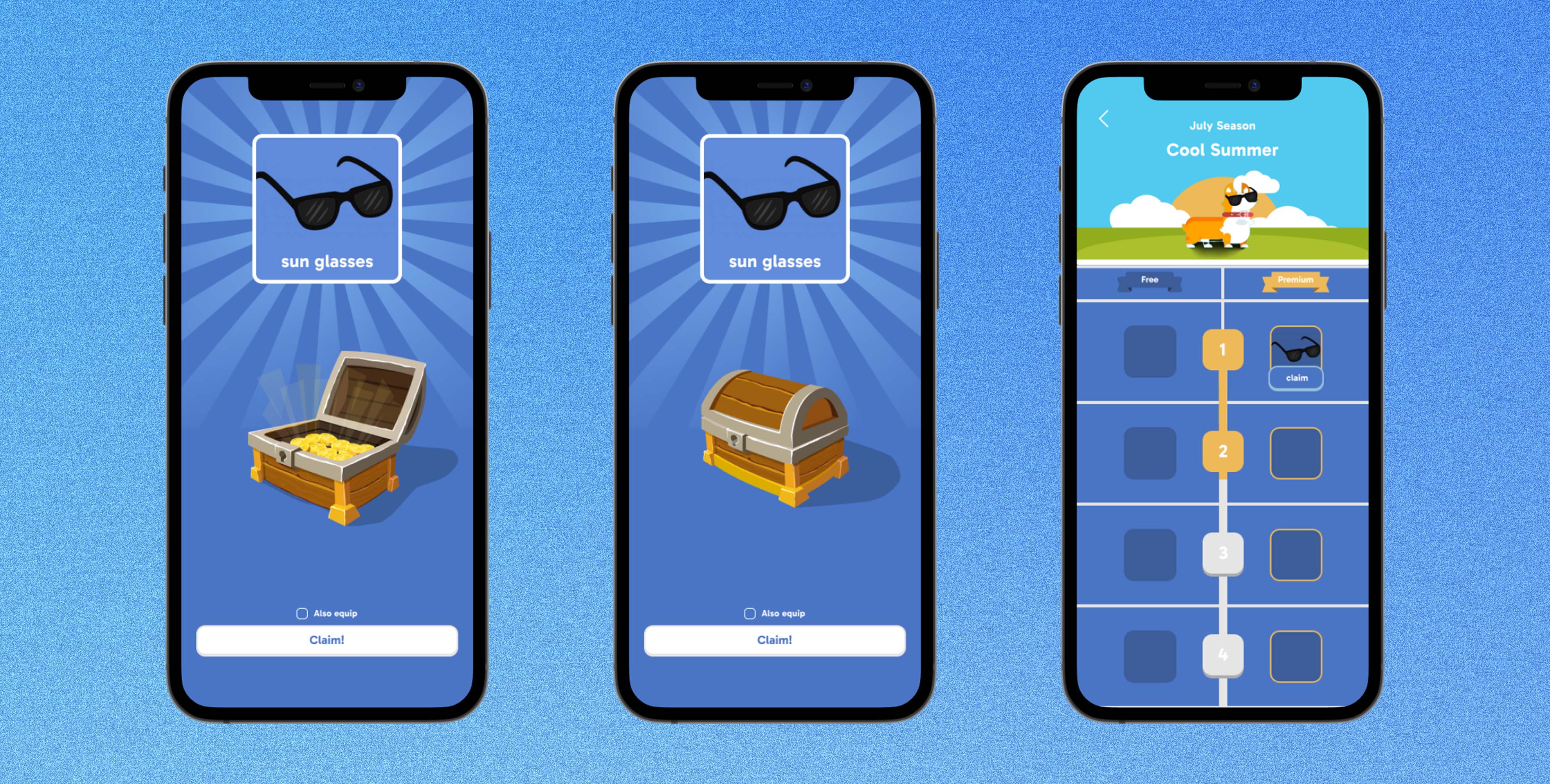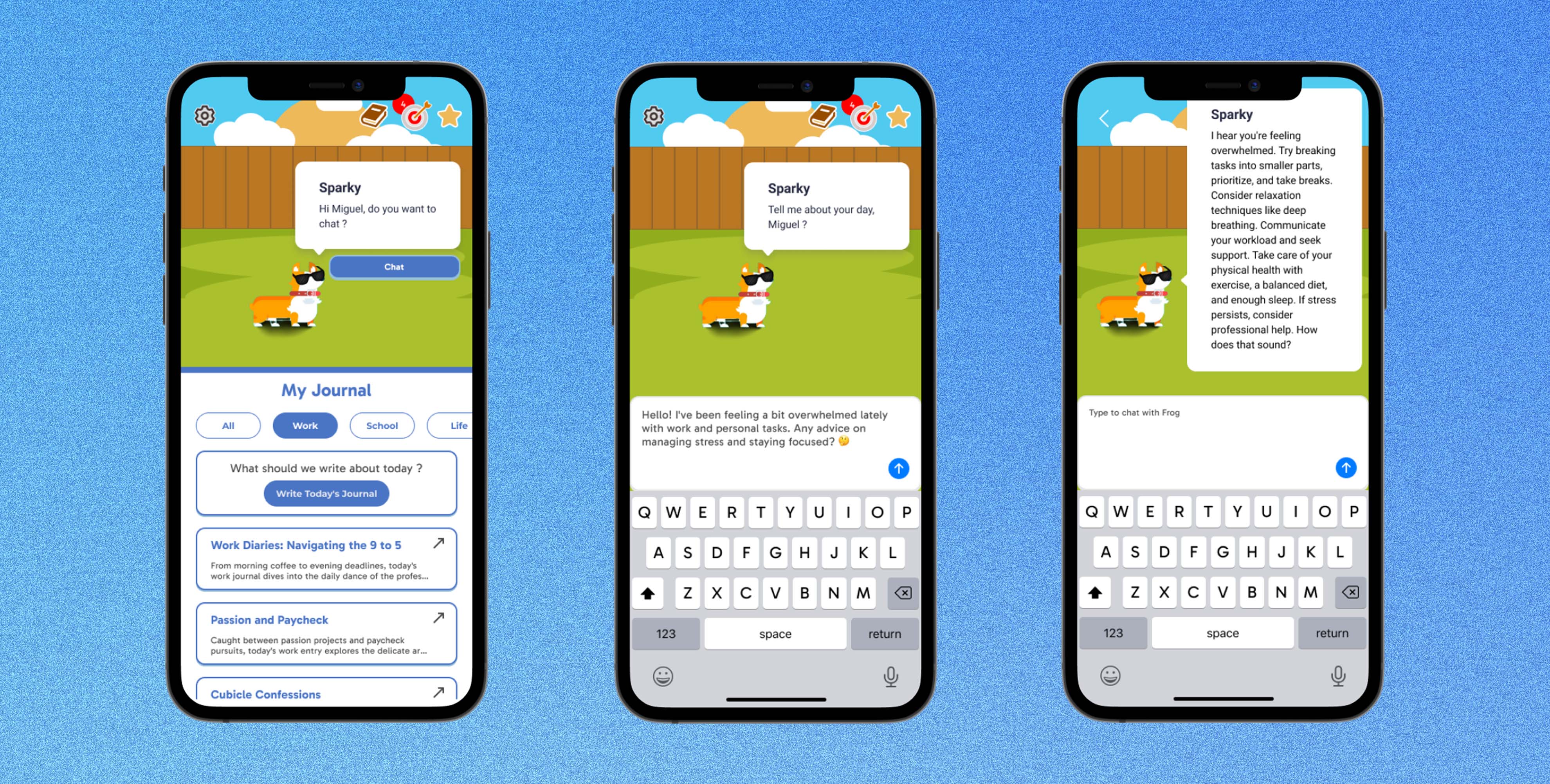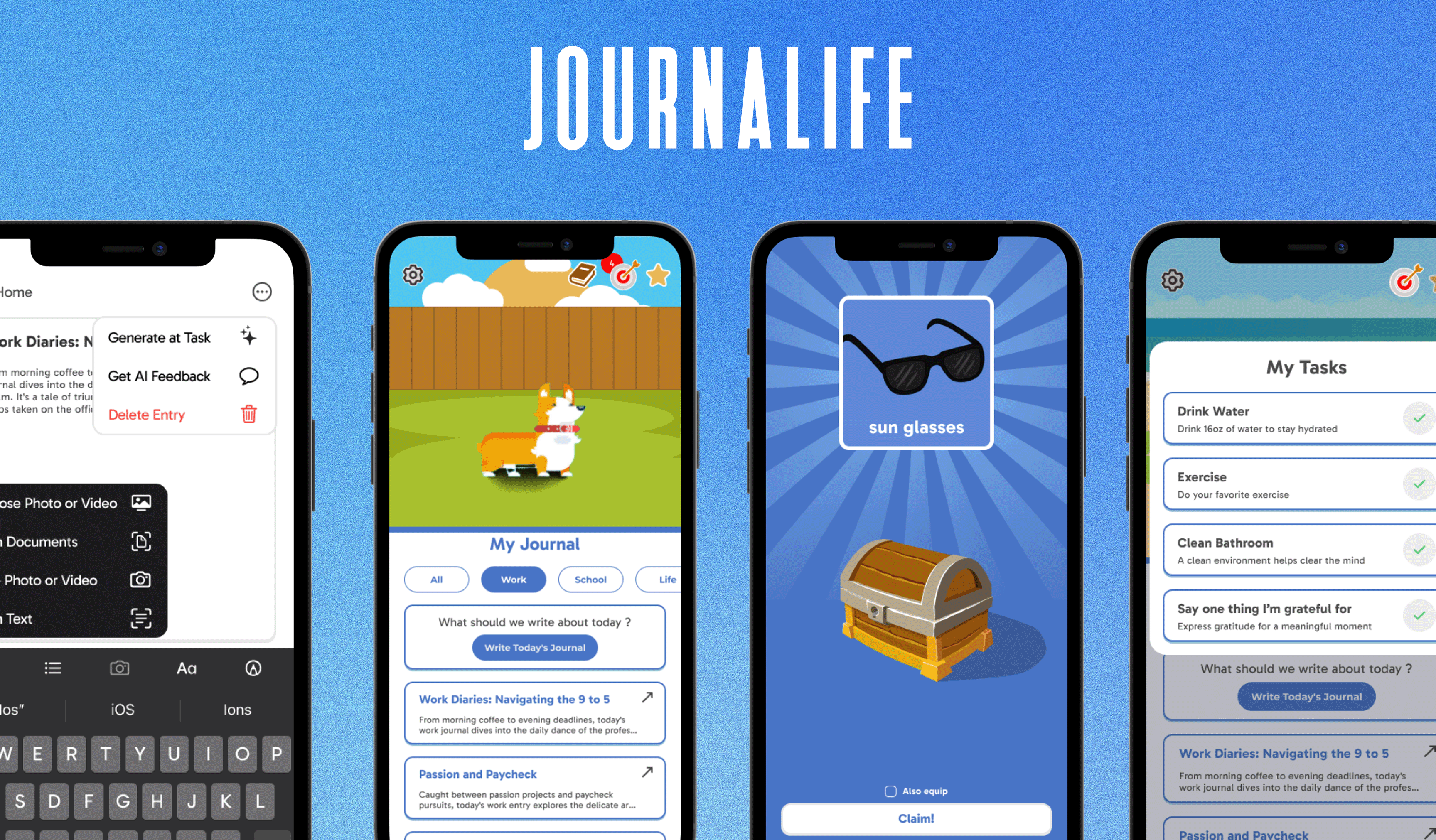
Journalife a journaling app, evolving into a dynamic platform powered by AI. Offering personalized feedback, challenges, and resources, it goes beyond traditional journaling. The app features a unique chat bot for interactive reflection. With added gamification, including challenges and rewards, Journalife ensures an engaging experience, making self-discovery both enjoyable and motivating for users.
Our survey (23 Respones) and interviews (10 students) for a mental wellness app revealed key concerns among college students, emphasizing the demand for accessible mental health resources. Varied satisfaction levels among users underscored frustrations with ineffectiveness, time commitment, and cost. Avoidance of services due to barriers like cost, time, and social stigma highlighted the need for cost-effective, low-commitment solutions with a privacy focus. Stress, anxiety, and life challenges emerged as the most requested features, reflecting the primary concerns of students. Privacy concerns, particularly with AI chatbots, indicate a skepticism toward AI's effectiveness in recommending resources. App development should prioritize addressing these key concerns—cost-effectiveness, low time commitment, and privacy—with a focus on stress, anxiety, and life challenges to resonate most with students.
1.Other apps that impliment gamification are often extremely pricey.
2.Some have too much customization or too little customization.
3.For the most popular gamified mental health apps, cute mascots were very common.
4.For the most popular gamified mental health apps, cute mascots were very common.
5.Overall most of these applications can be overwhelming and complicated.
1.The user will have mostly negative emotions from mental health for the majority of the Journey
2.User pain points skepticism in AI, time consumption, and payment
3.User will feel their emotional high when they check off a task and earn points towards their battlepass
4.Users will feel happy to come back to unlock more customization for their charater
